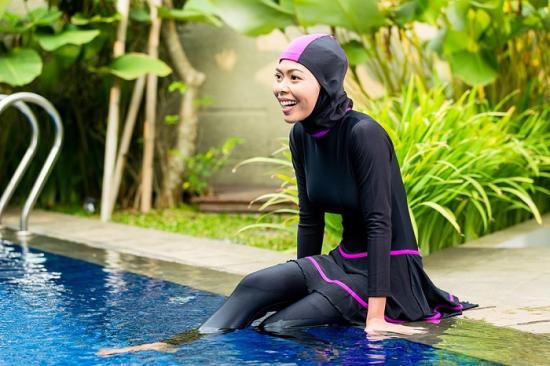-
Close
-
Categories
-
My Bag
-
My Wishlist
-
My Viewlist
-
Login / Reg
Country Language and Currency


Published on December 20, 2022

In this article, we will cover Muslim Veil and Types of Hijab. We give you a complete guide on different types and styles of Hijab.
The Hijab is often characterized as a "headscarf" by the West. However, there are different types of Muslim Veil available that also features different styles and ways the way women wear them. Also, the way they pin their scarves in place or the amount of coverage a hijab provides, or even the colors and fabrics women choose play a great role and differ greatly from Islamic culture to culture.
Here, we offer you a complete guide about the history of veils, different kinds, the place each type of Hijab is specifically worn, what they signify, and the trends and styling behind them.
In many countries, the way of wearing Hijab differs from individual to individual, depending on their own personal interpretation of religion.Before we move into the details, it's vital to know: Why do women wear hijabs?
There are many personal, religious, and social factors that impact women to wear a veil or not. Muslim religious scholars are not clear if on the question of veiling as derived from the Islamic texts. There are various segments in the Quran (the Muslim holy text) and the Hadith (the statements associated with the Prophet Muhammad) which make reference to veiling being worn by the Prophet's wives. Many scholars argue that this clearly states that the Muslim woman must veil herself but others argue that these statements are applicable only to the Prophet's wives and not to all Muslim women.
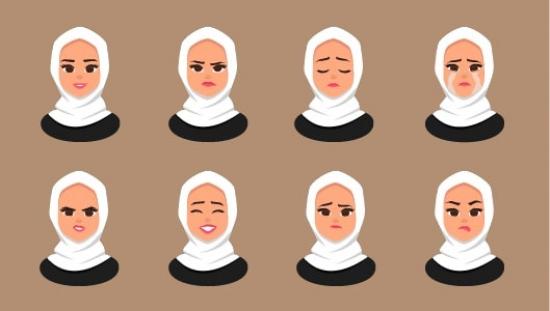
As time evolved, French and British colonizers encouraged Muslim women to take off their veils to mimic European women. As a result, in many North African and Middle Eastern countries, the veil turned out to be a symbol of national identity and freedom in contrast to the occupation of foreign powers.
The hijab has come up in media and public conversation in regards to French laws regarding freedom of expression. On 14 September 2010, France passed an act outlawing face-covering in public, which banned masks, helmets, niqabs, and burqas. The law imposes a fine of up to 150 euro for any person who violates this law. The bill also fines people who force others to cover themselves with a fine of 30,000 euro and one year in prison. However, it is not just Islam religion where covering of the head has a significant role. Several other religions, including Orthodox Judaism and Catholicism, have some sort of hair covering as part of the tradition.
Recently, we have seen Arab and Middle Eastern women refusing to be stereotyped as an oppressed figure forcibly required to wear conservative clothing. Many women are turning to fashion as a method of self-expression. For them, it is empowering to be able to simultaneously feel control over your own body but to also make bold statements expressing personal style and flair.
An opinion poll was conducted in 2014 by The University of Michigan's Institute for Social Research. They asked residents of seven Muslim-majority countries (Egypt, Iraq, Lebanon, Tunisia, Turkey, Pakistan, and Saudi Arabia) about which women's dress they consider to be most appropriate in public. The result was overwhelming when the headscarf was chosen by the majority of people in Egypt, Iraq, Tunisia, and Turkey.
Saudi Arabia was the most conservative where 63% stated the niqab. Also, in Pakistan, the niqab is the most popular that features a full-length chador robe and the headscarf, received about a third of the votes each; while in Lebanon half of the respondents chose no head covering at all.
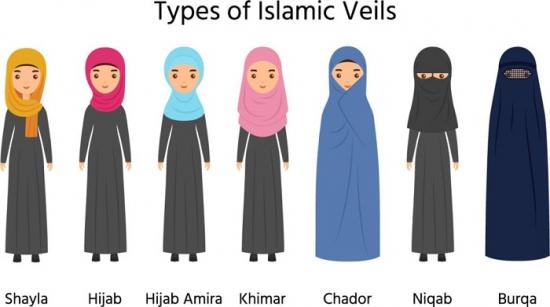
Many people think that all Islamic head coverings but this word is mainly used to mean a headscarf. This is a commonly used word. Nevertheless, there is no uniform style of what a hijab look like is worn across the globe. Hijabs are available in various patterns, fabrics, colours, and styles. In today's world, it's more of a personal preference that determines how to wear Hijab and is mostly referred to the veil that covers the head and neck but leaves the face unhidden.
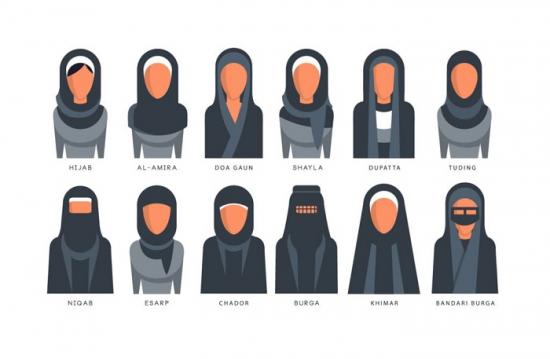
Popular in the Persian Gulf, a Shayla is a long, rectangular scarf that is wrapped around the head and tucked or pinned in place at the shoulders. People often use it interchangeably with the word Hijab, but this is a specific term that represents a garment that leaves the face uncovered, while hijabs do not necessarily imply that. Shayla too is available in myriad fashions, colours, fabrics, and styles that establish this fashion style.
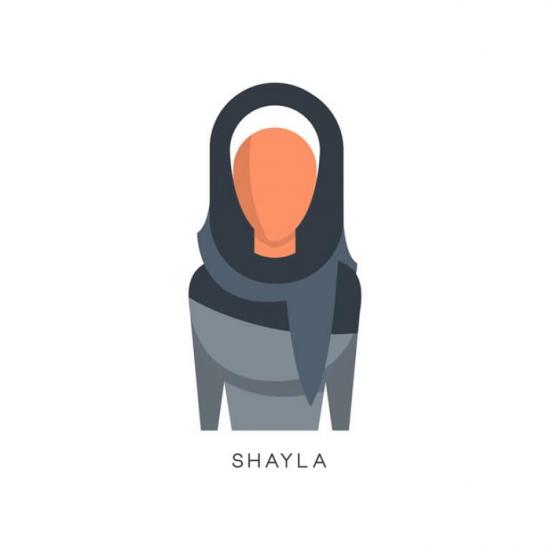
An Esarp is basically a silk square scarf worn by Turkey women. This style is known for its special material and is available in many numerous designs and colours.
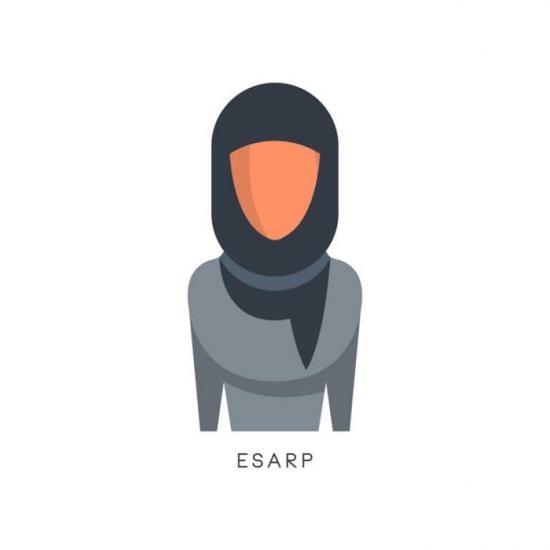
A Tudung (also spelt as "Tudong") is the most popular headcover for Muslim women in Southeast Asia. In Malaysia, Singapore, and Indonesia and Brunei, the Tudong is worn for religious reasons as per Islam. There is no difference between the Tudong and Hijab because it covers the hair, ears, neck while leaving only the face exposed. In fact, this is part of the standard dress code for many offices, school uniforms, and formal public gatherings.In Indonesia,
Tudung has a slight variation and is a veil that has a sewn-in curved visor. This shields the wearer from the harsh sunlight.
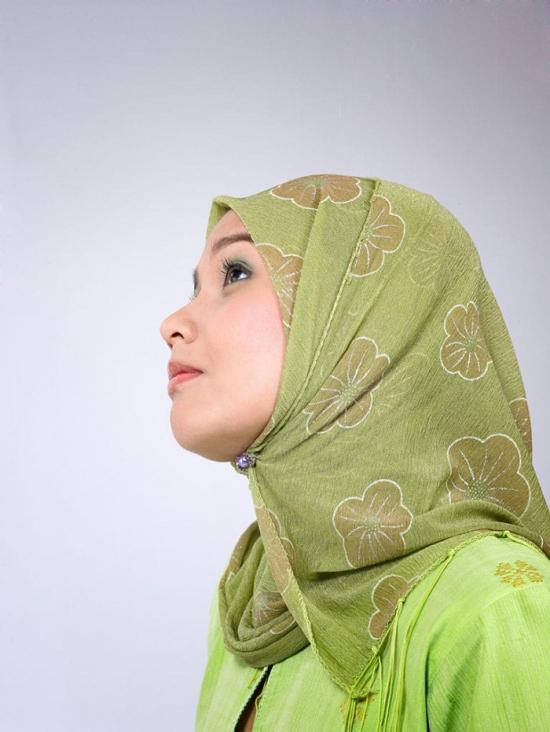
A Chador is anarc of fabric that is draped over the head like a shawl. There are no fasteners in Chador and one has to hold it together in the front under the neck by hand. Some women use pins or ties to keep it in place. Black is the most popular colour but many women wear colourful versions at home or at the mosque. Chadors are famous in Iran or countries with that has large Shia Muslims. Sometimes, it is worn with a smaller headscarf beneath.

Among many types of hijab is the Al-Amira (sometimes spelt Ameera). It is a two-piece veil that is made using a close-fitting cap that is made from cotton or any other lightweight material and a tube-like scarf.
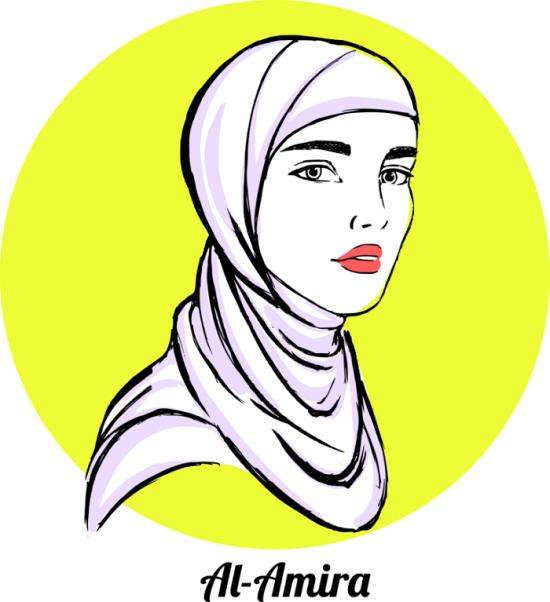
The Khimar is a long, cape-like veil thathangs down further than other veils, usually above the waist. It covers the hair, neck, and shoulders completely, but leaves the face uncovered. However, some Khimars are lengthy and go all the way down to the knees and is especially popular for some Egyptian women. Historically, Khimar refers to any object of clothing that endorses modesty, covering the chest and protecting the woman from the gaze of unrelated men.
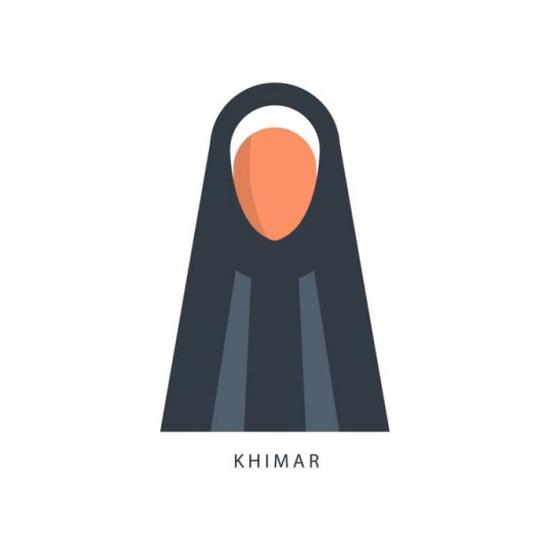
The Battoulah is probably one of the least known or recognized item. It is a mask that generally is made out of thick fabric and is considered a type of Niqab because of the modesty it allows to the wearer. The Battoulah is worn by women in several Gulf countries such as Bahrain, Kuwait, Saudi Arabia, United Arab Emirates, Oman, and Qatar, and even in Southern Iran. It is typically worn by Bedouins and older, married women to be specific. It is also credited in keeping dust away from one's nose and mouth. While this iconic piece is fading with many younger generations choosing a more sublime outfit, many women still choose to retain this cultural practice in order to keep the tradition alive.
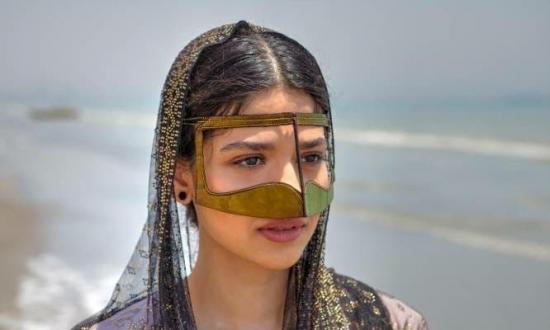
The Boshiya (also called a Bushiyyah or Ghatwa) is the most conservative dress style on this list. Similar to the Burka, it doesn't even have an opening for the eyes and covers the face completely. It is made using a large square of thin, cotton transparent material with strings at the top. These strings are used to fasten them from the top of the forehead that cloaks the entire face as the cloth falls down.
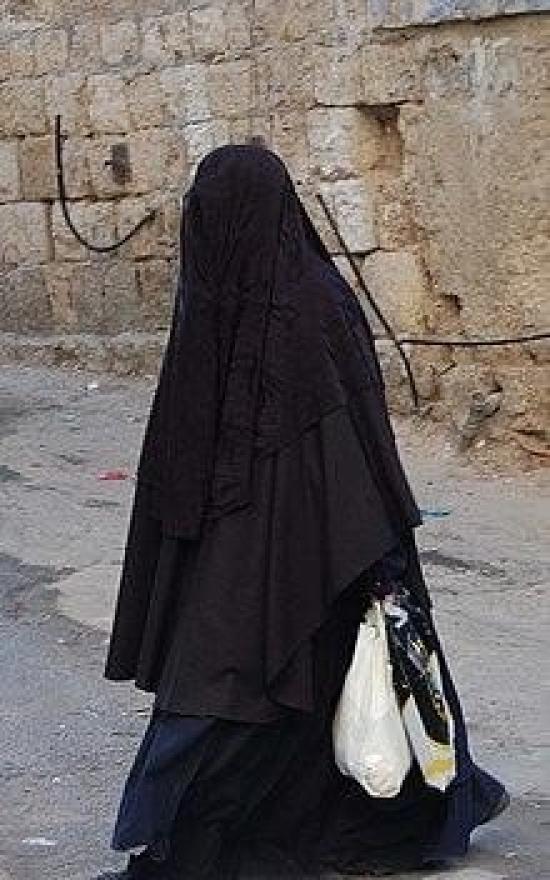
The Burka (also spelt Burqa) is the second most conservative and body covering attireafter Boshiya. It covers your entire facewith a crocheted mesh fabric over the eye area. It is being worn traditionally throughout Central Asian countries and is made using a variety of materials including horsehair. In Kabul, the capital of Afghanistan, most of the burqas are blue but in other parts of Afghanistan and Pakistan, they're available in brown, green, or white. The policies around the burqa are interesting and invoke many questions about politics, religion, and social status.
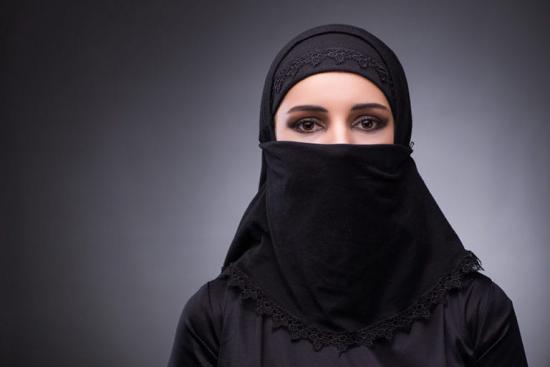
A dupatta is part of the customary Pakistani, Indian, and Bangladeshi outfits. A long rectangular veil made using lightweight material, it is beautifully embroidered on the edges. Muslim women may also use it as a headscarf as well. You will find transparent to heavily detailed, elaborate embroidery and patterned dupattas. It is not uncommon to see very shiny gold and silver dupattas.
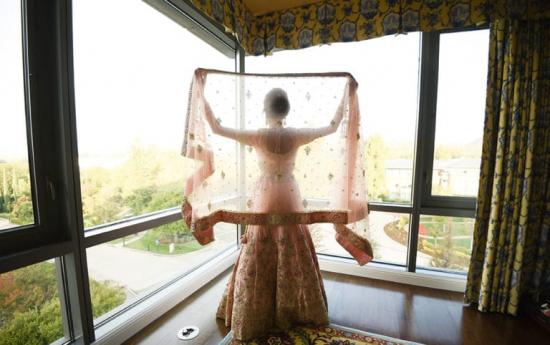
Mentioned in the Quran, the term Jilbab usually refers to a protective piece of clothing and not a specific garment. In North Africa and the Arabian Peninsula, a jilbab usually means a long dress or tunic. However, if you are in Indonesia, Jilbab refers to any modest dressing style, especially a headscarf, that covers you from head to toe.
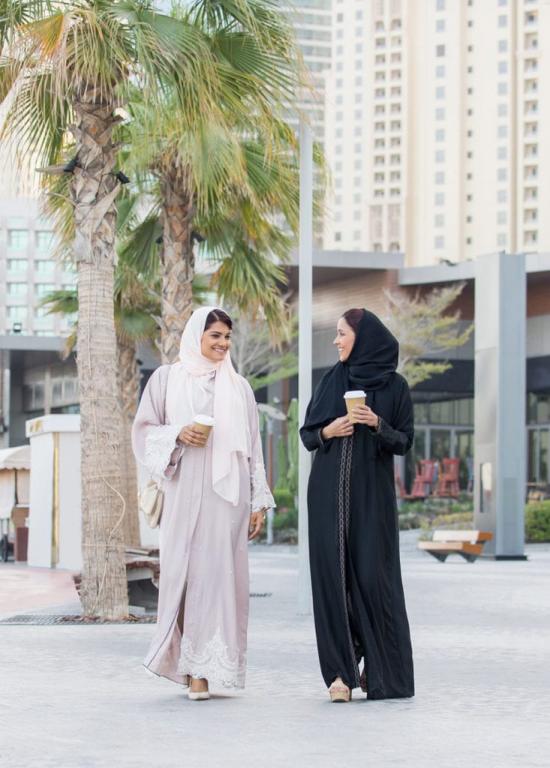
A Niqab is a veil that is worn in combination with a headscarf to cover the woman's face completely leaving a slit for the eyes. It is normally a black piece and is worn with a loose body garment that covers the rest of thewoman's body. There are two main types of niqabs available:
The full Niqab covers the face and head completely apart from a split for the eyes. This attire is popular in many Gulf states.
The half Niqab leaves the eyes and the forehead uncovered which is frequently worn in South Asia and North Africa.
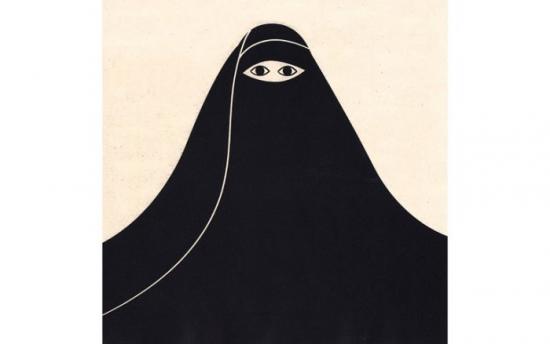
Dua Guan simply means "dress for praying", "Dua" means praying and "gaun" means a dress. This is a versatile clothing article that is available in two pieces: the gown and the headscarf. Many women carry Doa Gaun so that they can stop at a nearby mosque, pray and then slip into their daily wear to carry on with their responsibilities.
Last among the types of Hijab is the Burkini.As represented on the Sports Illustrated cover by model Halima Aden, a Burkini is a modest swimsuit. The Burkini covers the whole body except the face, hands and the feet. It is lightweight which makes it comfortable enough to swim. This design is intended to honour Islamic ideals of modest dressing while allowing the wearer to participate in aquatic activities.
